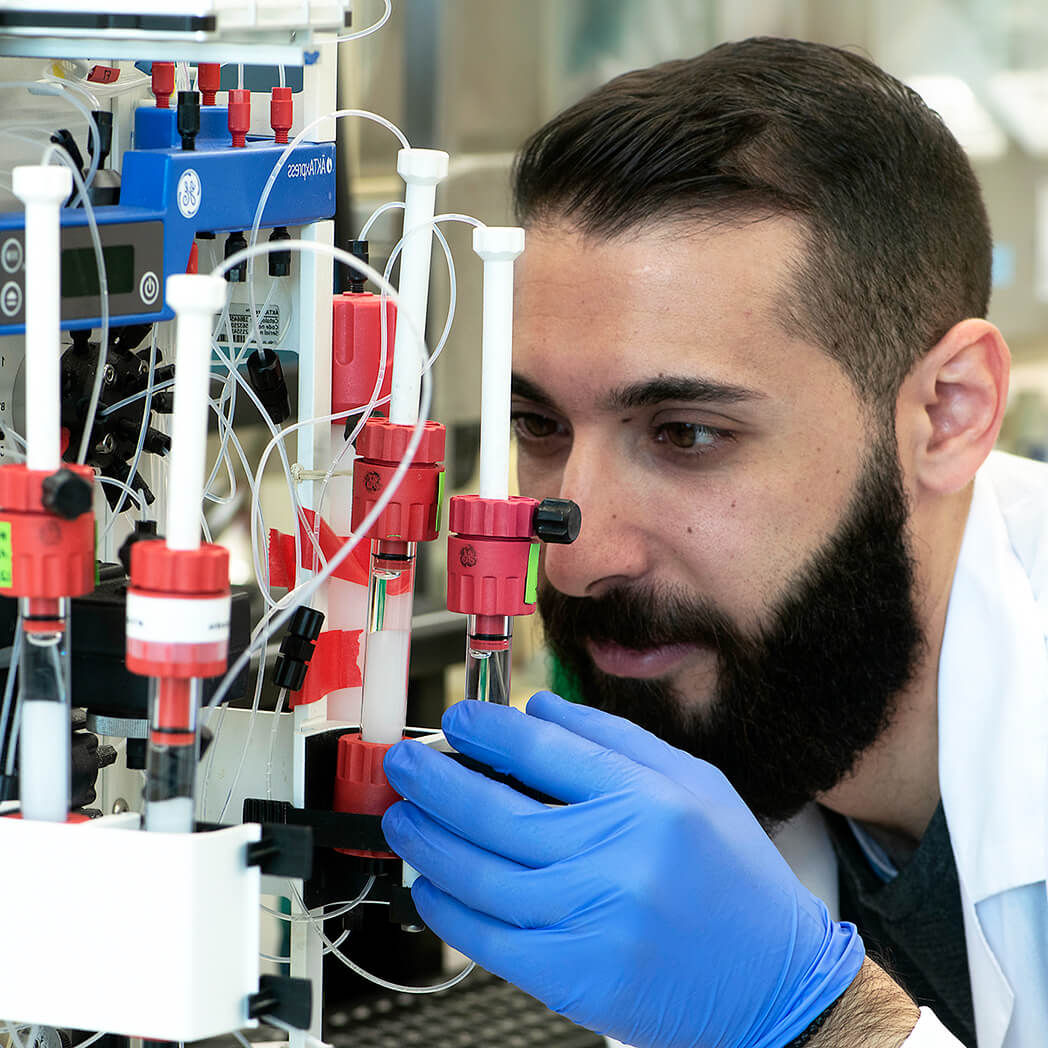Overview
|
| Bioz Stars Product Rating | |
| The world's only objective ratings for scientific research products | |
| Mentions | |
| Recency | |
| View product page > | |
Alomone Labs is pleased to offer a highly specific antibody directed against an epitope of the rat KV3.3 channel. Anti-KCNC3 (KV3.3) Antibody (#APC-102) can be used in western blot, immunohistochemistry and immunocytochemistry applications. It has been designed to recognize KV3.3 from rat, mouse and human samples.
Application key:
Species reactivity key:
Applications
 Western blotting of rat brain membranes:1. Anti-KCNC3 (KV3.3) Antibody (#APC-102), (1:200).
Western blotting of rat brain membranes:1. Anti-KCNC3 (KV3.3) Antibody (#APC-102), (1:200).
2. Anti-KCNC3 (KV3.3) Antibody, preincubated with KCNC3/Kv3.3 Blocking Peptide (#BLP-PC102).
- Rat brain sections.
- Mouse spiral ganglia (SGNs) (Chen, W.C. and Davis R.L. (2006) Hear. Res. 222, 89.).
Citations (12)
- Western blot of mouse brainstem samples and immunohistochemistry of mouse medial nucleus of the trapezoid body (MNTB). Tested in Kv3.3 knockout mice.
Choudhury, N. et al. (2020) J. Physiol. 598.11, 2199.
- Mouse spiral ganglia (SGNs).
Chen, W.C. and Davis R.L. (2006) Hear. Res. 222, 89.
- Alonso-Espinaco, V. et al. (2008) Neuroscience 155, 1059.
- Hurlock, E.C. et al. (2008) J. Neurosci. 28, 4640.
- Cartwright, T. A. et al. (2007) Biochim. Biophys. Acta 1770, 666.
- Kaneda, M. et al. (2007) J. Neurophysiol. 97, 4225.
- Pannaccione, A. et al. (2007) Mol. Pharmacol. 72, 665.
- Xia, F. et al. (2007) Endocrinol. 148, 2157.
- Brooke, R.E. et al. (2004) Eur. J. Neurosci. 20, 3313.
- Shevchenko, T. et al. (2004) J. Neurophysiol. 92, 3043.
Specifications
- Peptide KSPITPGSRGRYSRDRAC, corresponding to amino acid residues 701-718 of rat KCNC3 (Accession Q01956). Intracellular, C-terminus.

Scientific Background
KV3.3 is a member of the Shaw-type family of voltage-gated K+ channels that includes four members (KV3.1-3.4).
KV3 subfamily members inactivate very rapidly and therefore are thought to play a role in the repolarization of action potentials and to facilitate repetitive high frequency firing.
KV3.3 is mostly localized in the brain, although it has been observed in vascular smooth muscle cells and eye epithelium. In the brain its expression pattern largely overlaps that of the KV3.1 channel suggesting that they may form functional heteromers. Indeed, mouse knockouts of both KV3.1 and KV3.3, but not either channel alone, display severe motor defects.
- Rudy, B. and McBain C.J. (2001) Trends Neurosci. 24, 517.
- Matsukawa, H. et al. (2003) J Neurosci. 23, 7677.
